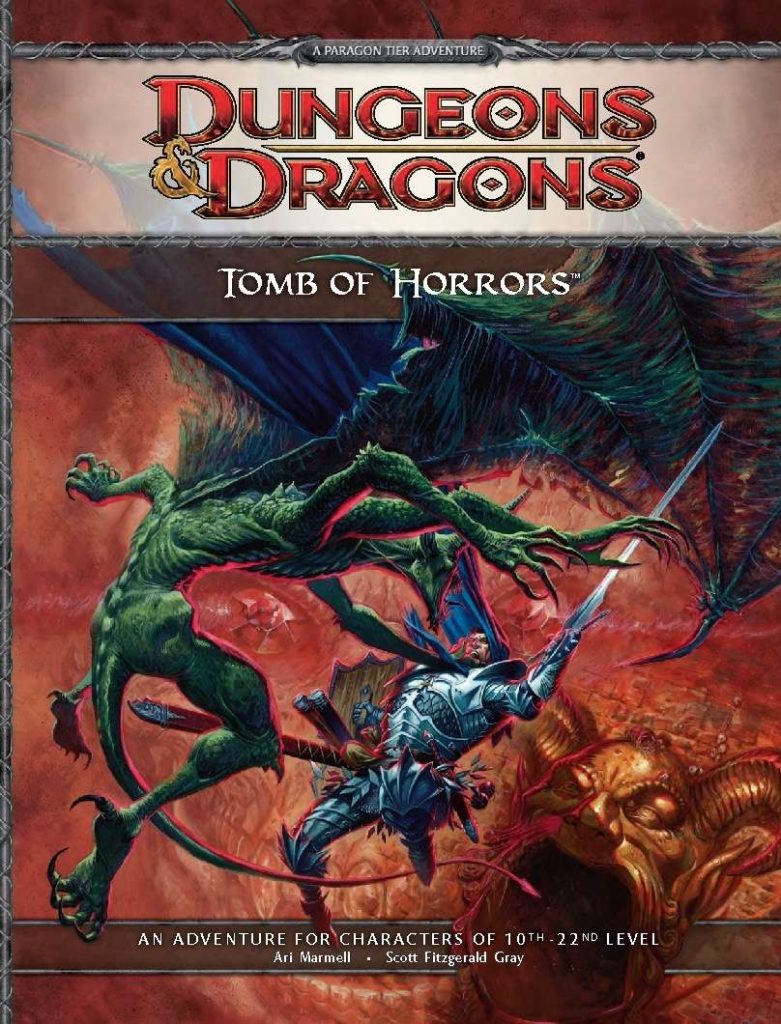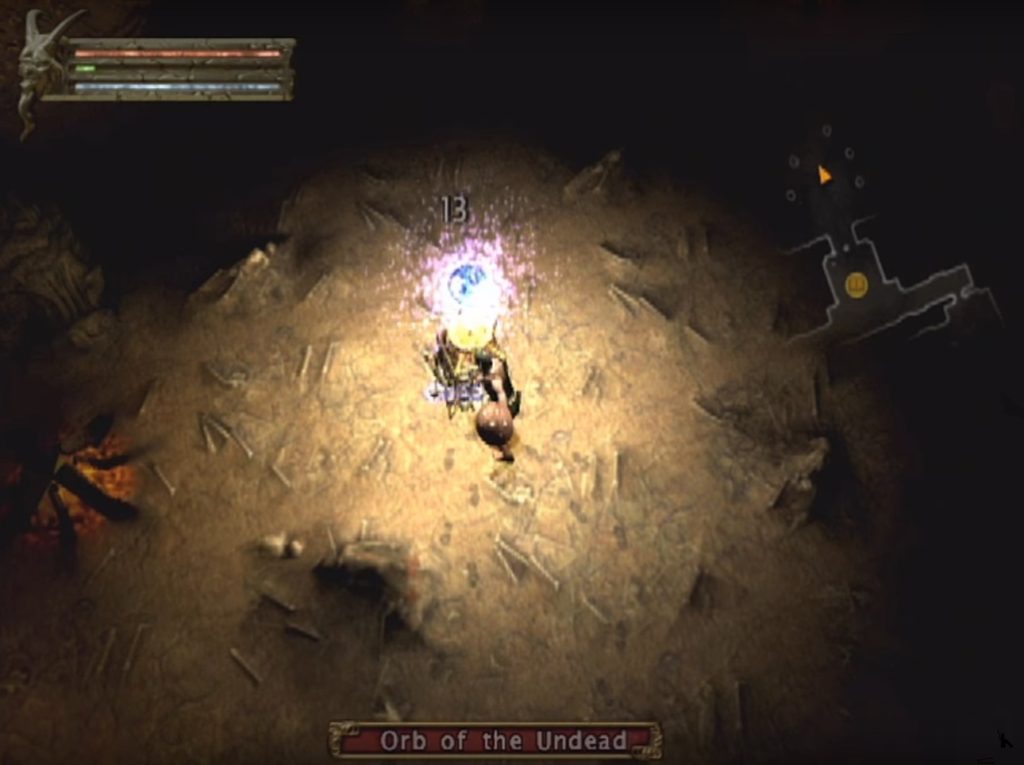A lich is a powerful mage who hid their soul in a special object to avoid death. These guys are undead monsters with nasty attitudes. Harry Potter‘s Voldemort is the most famous lich in fiction, but the idea has vague folklore roots going as far back as Russian stories about Koschei the Deathless. The Lich also showed up as the “serious” villain in Adventure Time, and the Lich King might very well be the only Warcraft villain you’ve heard of.
These scintillating skeletons have certainly gotten around, but the real question is how in the hell are you going to use them in your D&D game? There are a lot of answers to this question but I’m going to focus on two: the Dungeon Keeper and the Arc Villain.
The Dungeon Keeper
A lich is a good excuse for why your dungeon exists, and something to fight at the end of it.
The rumor going around is that most liches did whatever baby-eating, mass-murdery atrocities they needed to do to get that way, so they could sit on their bony ass, paging through their old copy of the Necronomicon for forever and a day. This is a terrible motivation for a proactive villain out to ruin your day, but it is a pretty great one for a guy that owns a trap and treasure-filled hole.

The crazy wizard is the time-tested excuse for a nonsense gonzo dungeon, and liches are the kings of crazy wizards. An uphill-flowing waterslide floating on a river of pus? Zombie a cappella? An uneven chair supported on one leg by a deck of many things? A sphere of annihilation behind door number three? The lich has you covered. This guy has already gone around the world, killed its heroes for treasure, and slaughtered its innocent. Now they just want to be left alone, but you and your party of 4-10 adventurers are going to avenge their misdeeds and get rich doing it. Or die. That is also likely.
The Arc Villain
Give your Lich a motivation — remember that they have made a conscious choice to become who they are.
But, if you aren’t running an old-school treasure hunt, then a lich that’s too busy reading up on Cthulhu’s souffle recipe to do anything isn’t ideal. It is worth considering, then, why your baddie became a lich and what they’ve been planning.
Being a lich is a choice. Some rugged antihero could become a vampire after a hooker bit them. Same for a werewolf, except it was probably that weird hunter or lumberjack that got you. Ghouls and wendigos? Not many people wake up in the morning and decide to go to a Donner party. It’s the kind of thing that comes up when circumstances dictate. (And nobody wants to be a ghost.) But a lich? Pulling that off takes work. It’s a lot of long hours in forbidden libraries, studying antediluvian tomes. It’s a lot of time spent in your secret lab observing the effects of strange concoctions on your human victims. You aren’t getting that done in an afternoon.

Because your villain chose to be a spooky skeleton that’s got a bone to pick with you, you should consider why they did it. Hanging out in the library all day is all well and good, but this undead abomination probably chose to do it because they’ve got something in the works. If you’re an evil wizard up to a no-good scheme, it is only rational you would look at ways to live forever. Any heirs you have are useless nitwits, unreliable in the extreme (not that you’d trust them to see it through anyway).
Out of all the sufficiently evil ways to live forever, lichdom is a pretty good one. You separated your soul from your body and hid it away in a secure phylactery, allowing you to respawn after your body is destroyed. You can walk around during the day. You also don’t need to constantly hunt for blood or flesh to sustain your unholy existence — unless you go off the of the Fifth Edition Monster Manual, in which case your lich eats souls like a vampire sucks blood.
The Plan
A lich can live forever. Their plan is similiarly farsighted.
If your villain decided to take that big leap into eternal skeleticity, their plan is going to be long-term. That doesn’t mean it needs to have a lot of moving parts. After all, compound interest and secure investments are also long-term plans that necessarily have a lot going on. It does mean that the mage in question is very invested in its success, intellectually and emotionally.

What the plan is doesn’t really matter, so long as now is the time that the final piece needs to be stopped. For example, Voldemort was a wizard Nazi that wanted to turn Britain into a magocracy. He’d had that plan going most of his life, and would have succeeded if it weren’t for a group of three plucky student adventurers. Azalin Rex, from D&D’s Ravenloft campaign, wanted to overcome the sexual inadequacy that prevented him from mastering new magic. He’s willing to try anything to do it, including making children Frankenstein style, waiting for them to grow up, and then killing them and consuming their knowledge. Xykon, lich antagonist of the somehow still extant webcomic, The Order of the Stick, is embroiled in a decades-long macguffin hunt that just sort of fell into his lap.
Those are three fairly different schemes and just a small sample of the possibilities. Your lich could also be trying to advance their descendants’ interests from the shadows, shepherding a single family through the ages. A family of assholes, granted, but it isn’t their fault they are being manipulated by an undead horror. They might have the inside scoop on the immanence of the eschaton, and spent centuries preparing for that fight. Or maybe they’re creating increasingly efficient ways to gather souls to sustain their unholy existence. Bleh.
The Means
On the other hand, their tanky enough that they can get by with brute force.
Alright, so your lich is doing something other than floating around their underground hole in the Vast Swamp screwing with adventurers. How are they doing it? A lot of people think of liches as passive villains; this is why Fifth Edition codified the soul-sacrifice thing I’ve made fun of this whole article. But, even without that motivation they can be very proactive, in-your-face villains. Fuck it! Their time is nigh!

You might not see a lich until the third act, but they’ve got stooges everywhere that don’t know who they are working for. Local thieves guild ambushing a shipment of weapons coming into the city and selling them at below market rates to a faction that can’t afford them? Lich. People on the ground don’t know why, they don’t like it, but they’re doing it. And, unlike a lot of other classic D&D mastermind monsters, when the lich shows themselves they’re coming with hell and fire. Aboleths and kopru are fish, right? You’re never going to see them unless you go for a swim, and even then they’re going to be using all sorts of tricky mind powers instead of shooting acid and spells. The lich, on the other hand, has multiple lifetimes worth of fire, frost, and lightning to throw at any problem.
They also don’t have to suffer from that age-old problem: the villain decided to show up early, the party killed them, and now the plot’s resolved. The traditional (GDQ module) way of resolving this was by saying that the bad guy has tanks of magical clones to upload their soul into when they die, but, hey? What if they were a lich all along, using illusions to cover up their appearance? Now shit just got serious.
Weaknesses
The kind of person that becomes a lich is likely to be the kind of person that will screw everything up when it matters anyway.
If it sounds like liches are the Mary Sues of both mastermind villains and undead villains… well, they certainly think they are. And that’s a good thing for your heroes.
All liches hide their soul in an object called a phylactery — if it breaks, the lich either dies or has a really annoying week, depending on your DM. They don’t hide their souls just anywhere, either. Voldemort didn’t stick his soul in a random shoe hidden inside the wall of a bar in Gloschester, and as far as liches go, he was pretty young. A fetus in historical time, much less geologic.

Liches like to hide their souls in big, glittery, obvious objects that had might as well have a “please destroy me” sign taped on. And, for as long-term thinkers as they have to be, they probably won’t be super careful. They don’t need to be in the best of times, and at that climatic moment when everything they’ve worked for is at hand, they are usually too busy with catharsis. They beat Death himself — they’re not going to be bothered by local wildlife you call “adventurers”.
So, your lich could be hanging out in an adamantine and mithril hole, filled with the metagamiest traps in role-playing history, or they could be out fucking shit up. Either way, they’ve had a lot of time to think their plan through, since its taken them at least a few hundred years, and they’ve got the arrogance to screw it all up at the last minute. Have fun. If you did, let us know how your liches have turned out in the comments below!